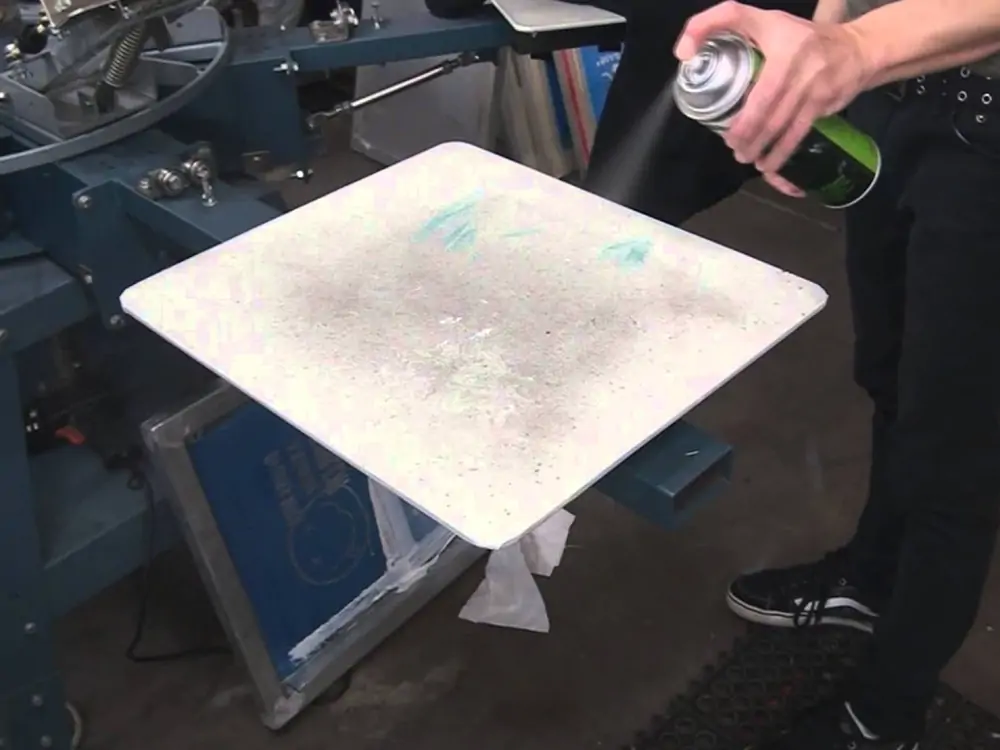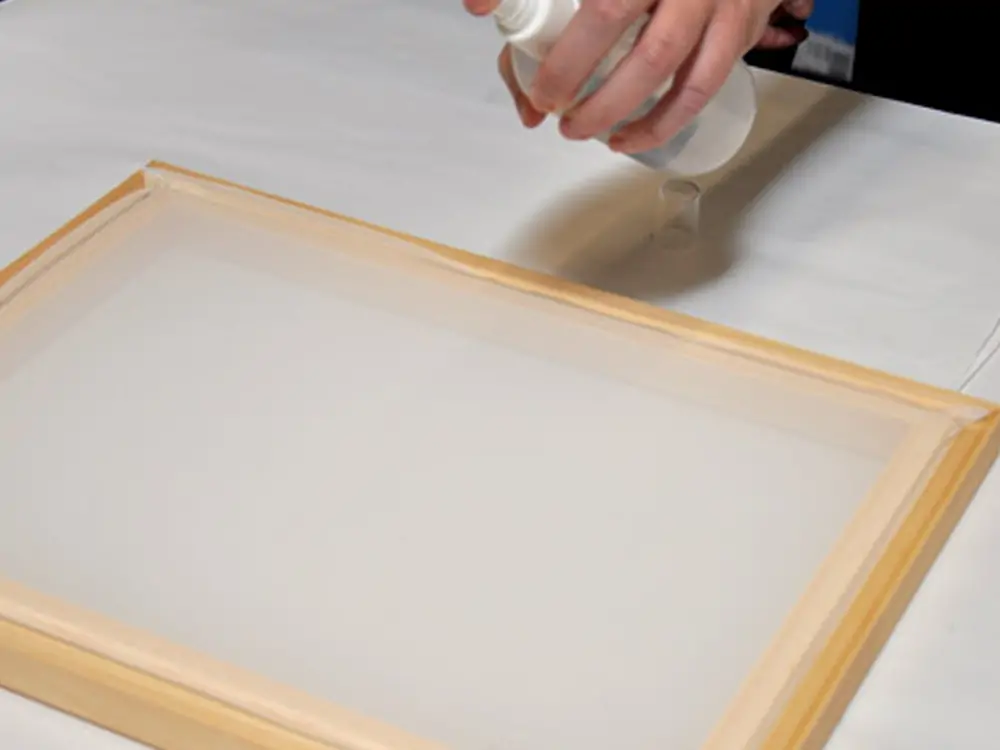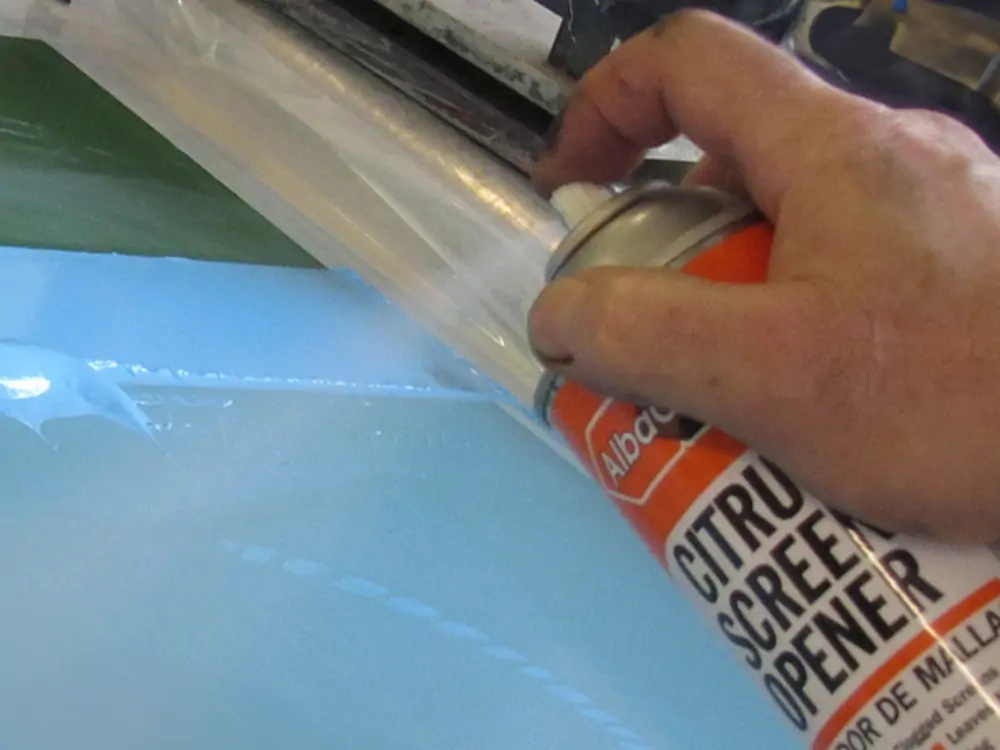Whether you’re working with fabric, metal, paper or plastic, you need spray adhesive for screen printing. During the screen printing process, spray adhesive plays a vital role by securing the screen or stencil onto the substrate.
In this post, we are going to dive deep into the role spray adhesive plays in the screen printing process. Hopefully, this post will help you understand the importance of using spray adhesive in screen printing. Here, you will also learn how to choose the suitable spray adhesive for your screen printing project.

What Is Screen Printing Spray Adhesive?
There are many different types of spray adhesives, and they are used for various purposes. Screen printing glue is a type of adhesive explicitly used for screen printing. This adhesive is available in aerosol cans.
It is applied directly to the substrate or printing surface before the screen or stencil is placed. The adhesive keeps them in place and offers long-lasting stickiness.
There are several different types of screen printing spray adhesives. They are specifically formulated for various substrate types and applications. So, before you choose a product for your project, learn about them. Then, choose one that is specifically formulated for the kind of project you are working on.
Types of Spray Adhesives Used for Screen Printing
Various formulations of screen printing spray adhesives are available on the market. These formulations are tailored for specific substrates and use cases. Understanding the differences between different types of screen printing adhesive can be helpful. Here are the most notable types of screen printing spray adhesives:
Permanent Spray Adhesives:
If your project requires a lasting bond, choose permanent spray adhesive for that project. Choose a permanent spray adhesive for a project that requires a one-time print and no reuse.
Temporary Spray Adhesives:
Temporary spray adhesives are ideal for projects that require temporary bonds but also easy removal. This type of adhesive is also great for projects that require multiple prints or frequent repositioning.
Temperature-resistant Spray Adhesives:
Some projects involve an elevated-temperature drying process or heat-curing inks. For such a project, you need a spray adhesive that is capable of high temperatures.
Pressure-sensitive Spray Adhesives:
If your project involves the application of high pressure, you need a spray adhesive that is pressure-sensitive. It can help you achieve an even contact between the screen and the substrate.
Specialty Adhesives:
There are spray adhesives that are specifically formulated for specific substrates such as metals and plastics. You may also need specialty adhesives when working with heat-sensitive materials.

Advantages of Using Spray Adhesive in Screen Printing
Securing Materials to the Surface
In the screen printing process, securing materials to the surface is one of the main functions of spray adhesives. When working with paper, fabric or similar substrates, spray adhesive secures the material firmly and keeps it in place. That removes the risk of misalignment or shifting, which results in precise and clean prints.
No Misalignment or Shifting
Due to the involvement of intricate designs, screen printing often requires precise registration of the material to the printing surface. By preventing the materials and screens from shifting, spray adhesives help keep them in perfect alignment.
When this is achieved, the prints are sharp and detailed. Even a little bit of misalignment can lead to flawed results. That is why many professionals consider spray adhesives essential for the screen printing process.
Better Printing Accuracy
Screen printing is all about accuracy, and spray adhesives help achieve accurate and consistent prints. It creates a secure and stable bond between the printing surface and the material. And that ensures that the print is sharp, precise and clean.
Ease of Use
Spray adhesives are very user-friendly, and that’s one of the main reasons for their popularity. You can easily apply it in an even and controlled manner. And so, it is precisely distributed. Also, spray adhesives dry very quickly. That means the application involves minimal downtime. In addition to this, you can use water or solvent to clean up this adhesive efficiently and promptly.
Factors to Consider When Choosing Screen Printing Spray Adhesive
Try to choose a screen printing adhesive that is formulated for your project. Here are some factors to consider when selecting screen print spray adhesives:
- Type of substrate: You should choose a screen printing glue that is compatible with the material you are working with. A screen printing adhesive is formulated for every substrate.
- Specific requirements of the project: Depending on the type of your project, you may need a permanent or temporary bond. Your project specifications also determine other requirements. They can include low VOCs and temperature resistance.
- Ease of use: Consider the user-friendliness of spray adhesive. Some spray adhesives may offer greater user-friendliness than others.
- Compatibility testing: Before you choose screen print spray adhesive for your project, make sure the product is right for you. For this, you can test the product on a small scale.
- Environmental impact: Some formulations of spray adhesives have more environmental impact than others. Consider choosing a low VOC formulation.

How to Use Spray Adhesive for Screen Printing
The process of applying screen print spray glue is pretty straightforward. However, there are a few things to keep in mind. The following best practices will help you get the best results:
- Before you apply screen printing spray adhesive, make sure the surface is clean and dry. You cannot expect optimal adhesion without adequate surface preparation.
- Apply aerosol-type strong adhesive spray evenly and consistently. Avoid oversaturation and weak bonding.
- Before placing the screen or stencil onto the surface, ensure the adhesive has dried. When you are printing, this little strategy will help you avoid smearing or smudging.
- Learn about the application process of the specific screen printing glue being used for your project. Carefully read the manufacturer’s instructions.
Frequently Asked Questions
What purpose does spray spray adhesive serve in the screen printing process?
In the screen printing process, repositionable adhesive spray sticks fabrics to the board. Thus, it prevents them from moving. It results in clean and precise prints.
Does spray adhesive work on fabric?
There are different types of spray adhesives used for bonding many other things. They include metal, wood, foam, acrylic, fabric, leather, cardboard, foil, glass, and corkboard. You may need permanent or temporary spray adhesive to bond the fabric.
How to prevent clogging issues when applying spray adhesive?
Clogs usually occur when the nozzle gets blocked. You can prevent this issue by keeping the nozzle clean after each use. To fix this issue, you can soak the nozzle in warm water.
Conclusion
In screen printing, adhesive is primarily used for securing screens and stencils. This adhesive is versatile and easy to use, and offers strong bonding. However you must choose the right adhesive for your project.
